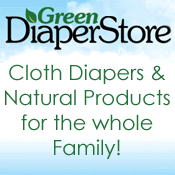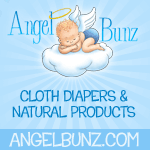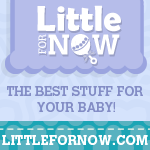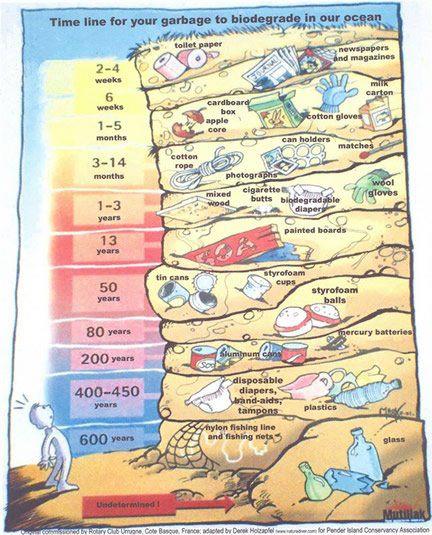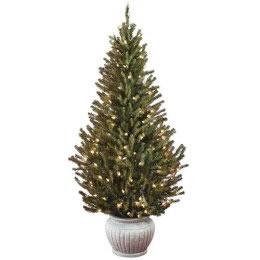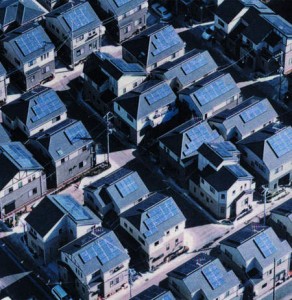I am not sure where this photo is from but it is really scary! I am glad my family is doing everything we can to reduce what we send to the landfill. What does your family do?
The holidays can be a time with tons of waste. There are some simple ways you can reduce your waste and save money!
My kids get involved by choosing what wrapping paper to use from the boxes of artwork we collect all year long.
1.) Look for smart gifts! Gifts that have minimal packaging, can be reused, are recyclable and durable are easier on our planet.
2.) Be creative with your gift wrapping! Use old baskets, food tins, newspapers, magazines and your children’s art work to wrap presents.
3.) Instead of buying a tree that was grown on a tree farm with lots of pesticides consider using a potted tree that can be used year after year.
4.) If you do get a cut tree make sure to recycle it. Recycling trees keep them out of landfills.
5.) Choose gifts made of natural components such as organic fabrics and wood.
6.) Use low energy LED lights in your decorations.
7.) If you have holiday cards from last year you can use them as gift tags this year.
You are pregnant!! You go to your local baby store and there is so much to choose from. How do you figure out what you really need and what is a waste of money? Ask a friend!
I am often asked what parents need to purchase or register for when getting ready for baby. The most important things a baby needs is breasts, arms and love! For the more practical items I have put together a list of my favorite things! Since these are my favorite things the list is not meant to be all inclusive.
- Cloth Diapers – Newborns go through about 12 diapers a day. Most people like to have enough diapers on hand to wash every other day. Here is an article about figuring out how many you need.
- Cloth Wipes
- Diaper Sprayer
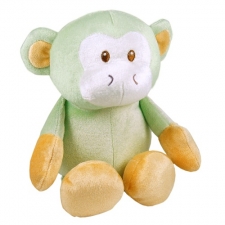
- Pail Liners
- Cloth Diaper safe Detergent
- Earth Mama Angel Baby Nipple Butter – I recommend this to everyone. I love this stuff!
- Nursing Pads, my favorite is Bamboobies!
- If you are returning to work and needing to pump I recommend Hygeia products. Hygeia is a green company and they follow the WHO code for the marketing of breastfeeding substitutes.
- Nursing bras
- Organic and toxic free baby toys
- Layette – I prefer simple baby clothes like onesies.
- Baby carriers! I personally love Beco but there are so many carriers to choose from. For little tiny newborns wraps are often the first choice.
- Car seat – This one goes without saying
- Co-Sleeper and related bedding
- Baby Soap/Shampoo. I used Earth Mama Angel Baby on my sons.
- Baby toothbrush and toothpaste
- Swaddle Blankets – I love Aden + Anais
Babies really need very little. We purchased so much for our first and we never even used much of it!
I think one of the hardest challenges parents have today is figuring out what is safe to use. A post on safety and baby products will be coming soon!
I am always looking for ways to live more eco-friendly. I do a pretty good job with the obvious things but when my electric and water bill came last month I realized I was not doing so good there.
I am in southern California and am a baby (or another word) when it comes to heat! The last thing my family wants to to hear is me getting cranky while I am melting. So why haven’t I figure out a way to use less electricity yet? Yelling at my boys to turn lights off doesn’t seem to be working!
According to one website I could save $99 a month if I had solar power. I wish solar power was not so expensive. The rebates and tax breaks are nice but it still seems like a ton of money up front. According to to this website the cost will be near $80,000.00 to install a system. WOW!
I guess until I win the lottery I will keep yelling at the boys and remembering to open windows at night.
The effects of using too much electricity have far greater consequences than our family bill. It is important to remember that making electricity is the number one source of greenhouse gas emissions. It accounts for about 40% of our country’s carbon dioxide emissions. These are scary numbers.
So maybe saving up for a solar power system could be a long (long, long) term goal.
Cloth vs. Disposable by: Lisa M. Carey
Many women don’t consider using cloth diapers unless their child has a reaction to a disposable diaper. However, there is a growing trend for many parents, and even celebrities in using stylish cloth diapers on their babies. You will want the best for you baby, including the best diapering option out there! Every parent chooses cloth diapers for their own personal reasons; however, the facts within this article are sure to have you consider using cloth diapers on your next baby. We want parents to make informed decisions, so use the information within this article to help guide you in making your final decision.
One child will require between 5000-7000 diaper changes in the first two years of life. This means a family can spend upward of $2,600.00 in diapers by the time that child is potty trained. This does not include the additional costs associated with using disposable diapers such as, creams, wipes, diaper genies or other plastic bags, and swimming or training diapers. With the wide selection of modern cloth diapers from single or dual system diapers, a family that chooses to use cloth diapers can save anywhere from $1,600.00 per child over the child’s diapering life. This is a huge savings and families save even more when there is more than one child in diapers.
Parents often are not told of the health risks associated with using many baby products, including the potential hazards in a disposable diaper. Often they turn to cloth diapers as a resolution to their child’s skin problems or even asthma after they have tried everything else. In a 1999 study, it was discovered that lab mice exposed to the chemicals released by 3 different types of disposable diapers experienced eye, nose and throat irritation and bronchoconstriction- a reaction similar to an asthma attack 1. Cloth diapers did not produce any of the same reactions. It is not common for parents to know that the dioxins in a disposable diaper are a highly carcinogenic by product of the paper bleaching process. It is banned in many countries, but not the US 2. It is also imperative that parents remember that these ‘off-gasses’ are present in many baby products including crib mattresses and mattress covers. It is always better to be proactive and preventative when it comes to our children’s health and safety, and it is a reminder to parents to not always accept messages given by manufacturers.
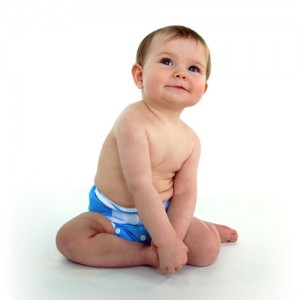 Have you ever stopped to think where the dirty diaper goes after you throw it in the garbage? It is estimated that 92% of disposable diapers make it to the landfill 3. Once there, the fecal matter left in a diaper contaminates soil and water, affecting the water quality and wildlife. Although fecal matter should be deposited into the toilet, whether you use cloth diapers or disposable diapers, most parents don’t bother depositing it into the toilet when they are just throwing out a diaper. However, when using cloth diapers it is recommended you dispose of fecal matter into the toilet where it belongs, prior to washing the diaper. Therefore, the fecal matter is disposed of in a more sanitary way so it can be treated properly in a sewage plant once flushed down the toilet. In addition, disposable diapers not only affect water quality when disposed into a landfill, but can take up to 500 years to decompose. When you factor in 5000 diaper changes for one child, that is a lot of diapers hanging around a landfill for the lifetime of that child and longer!
Have you ever stopped to think where the dirty diaper goes after you throw it in the garbage? It is estimated that 92% of disposable diapers make it to the landfill 3. Once there, the fecal matter left in a diaper contaminates soil and water, affecting the water quality and wildlife. Although fecal matter should be deposited into the toilet, whether you use cloth diapers or disposable diapers, most parents don’t bother depositing it into the toilet when they are just throwing out a diaper. However, when using cloth diapers it is recommended you dispose of fecal matter into the toilet where it belongs, prior to washing the diaper. Therefore, the fecal matter is disposed of in a more sanitary way so it can be treated properly in a sewage plant once flushed down the toilet. In addition, disposable diapers not only affect water quality when disposed into a landfill, but can take up to 500 years to decompose. When you factor in 5000 diaper changes for one child, that is a lot of diapers hanging around a landfill for the lifetime of that child and longer!
The next time you are shopping for that package of diapers, stop and think for a moment of the facts within this article. As an alternative shop at your local cloth diapering store or natural parenting boutique to ensure you are doing your best to care for your baby and the Earth.
1. “Disposable diapers linked to asthma”. Mothering Magazine. January/February 2000, Issue 98. Retrieved. from: http://www.mothering.com/green-living/disposable-diapers-linked-to-asthma
2 Allsopp, Michelle. Achieving Zero Dioxin: An emergency strategy for dioxin elimination. September 1994. Greenpeace. http://archive.greenpeace.org/toxics/reports/azd/azd.html

